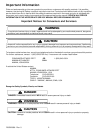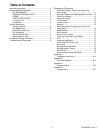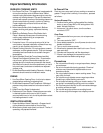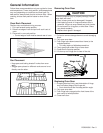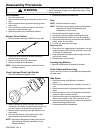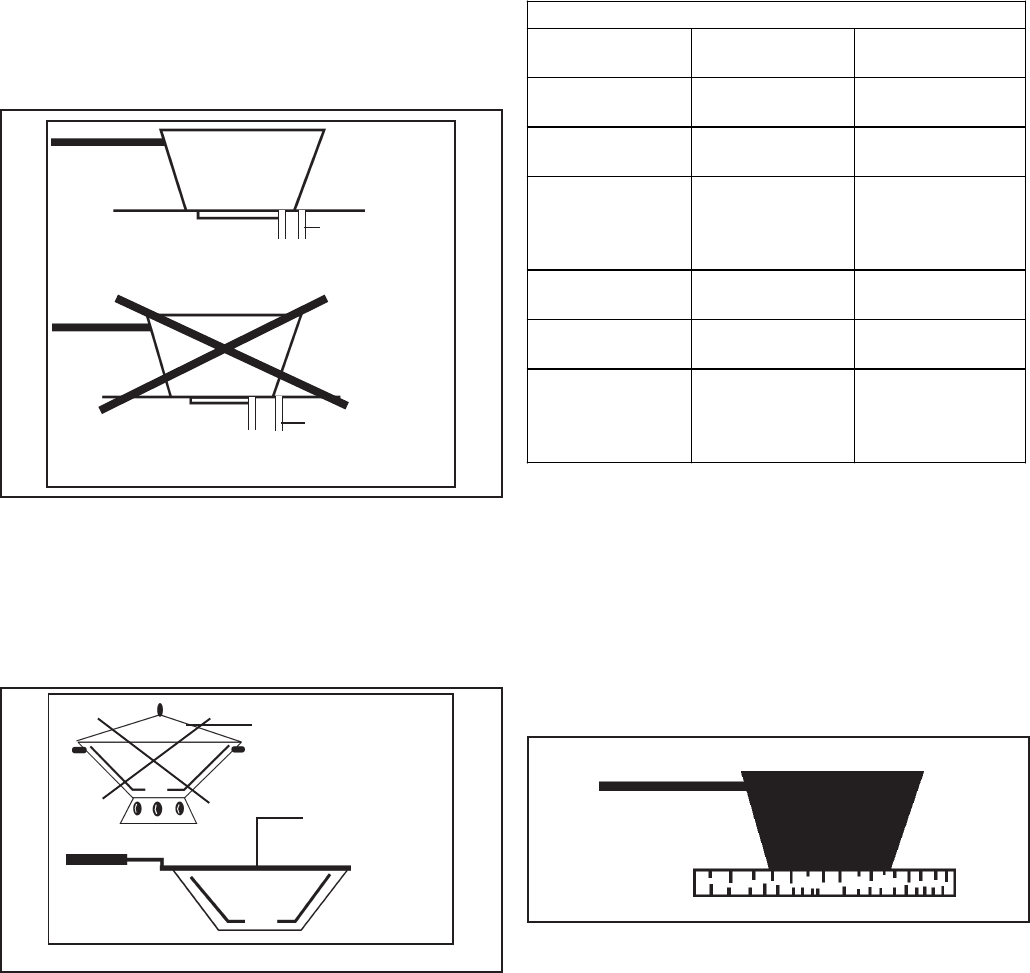
RS2320006 Rev. 0 6
General Information
Cooking Utensils
• Use proper pan size. Do not use a pan that has a
bottom smaller than element. Do not use utensils that
overhang element by more than 1 inch.
More than 1" overhang
2"
Less than 1" overhang
1"
• Use care when using glazed cooking utensils. Some
glass, earthenware, or other glazed utensils break due
to sudden temperature changes.
• Select utensils without broken or loose handles.
Handles should not be heavy enough to tilt pan.
• Select utensils with flat bottoms.
• Do not use a wok with a ring stand.
Do not use a wok with
a ring stand.
Use a flat
bottom wok.
Pan Bottom Test
Determine if pan has a flat bottom. For best cooking
results, use a pan with a flat bottom.
1. Rotate a ruler along bottom of pan. If pan is not flat,
gaps between bottom of pan and edge of ruler occur.
2. A small groove or mark on a pan does not effect
cooking times. However, if a pan has a gap, formed
rings, or an uneven bottom, it does not cook
efficiently and in some cases may not boil water.
Utensil Material Characteristics
Type Temperature
Response
Uses
Aluminum Heats and
Cools Quickly
Frying, Braising,
Roasting
Cast Iron Heats and
Cools Slowly
Low Heat
Cooking, Frying
Copper Tin
Lined
Heats and
Cools Quickly
Gourmet
Cooking, Wine
Sauces, Egg
Dishes
Enamelware Depends on
Base Metal
Low Heat
Cooking
Ceramic
(Glass)
Heats and
Cools Slowly
Low Heat
Cooking
Stainless Steel
Heats and
Cools at
Moderate Rate
Soups, Sauces,
Vegetables,
General
Cooking




